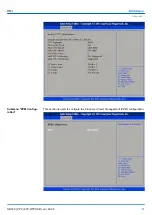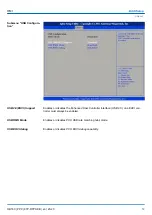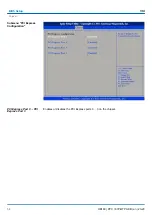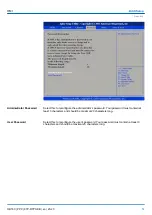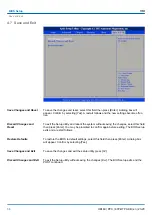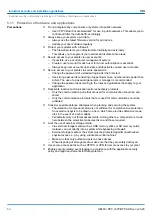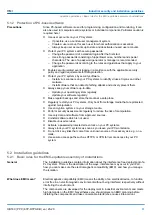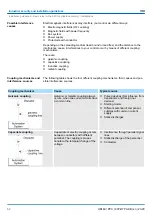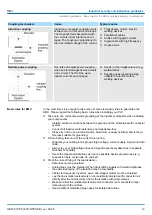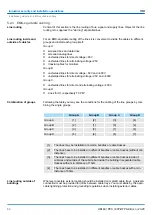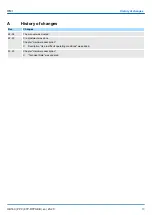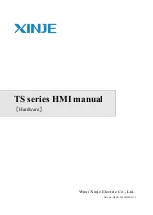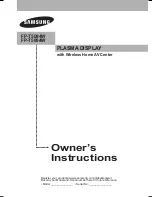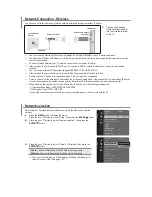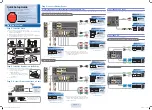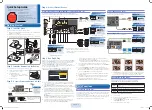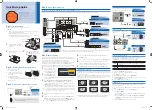
5.1.2 Protection of PC-based software
Since PC-based software is used for programming, configuration and monitoring, it can
also be used to manipulate entire systems or individual components. Particular caution is
required here!
n
Use user accounts on your PC systems.
–
If possible, use a central user management system.
–
Create a user account for each user for whom authorization is essential.
–
Always keep user accounts up-to-date and deactivate unused user accounts.
n
Protect your PC systems with secure passwords.
–
Change the password of a standard login after the first start.
–
Use strong passwords consisting of upper/lower case, numbers and special
characters. The use of a password generator or manager is recommended.
–
Change the passwords according to the rules and guidelines that apply to your
application.
n
Enable security-related event logging in accordance with the applicable security
policy and legal requirements for data protection.
n
Protect your PC systems by security software.
–
Install virus scanners on your PC systems to identify viruses, trojans and other
malware.
–
Install software that can detect phishing attacks and actively prevent them.
n
Always keep your software up-to-date.
–
Update your operating system regularly.
–
Update your software regularly.
n
Make regular backups and store the media at a safe place.
n
Regularly restart your PC systems. Only boot from storage media that are protected
against manipulation.
n
Use encryption systems on your storage media.
n
Perform security assessments regularly to reduce the risk of manipulation.
n
Use only data and software from approved sources.
n
Uninstall software which is not used.
n
Disable unused services.
n
Activate a password-protected screen lock on your PC systems.
n
Always lock your PC systems as soon as you leave your PC workstation.
n
Do not click any links that come from unknown sources. If necessary ask, e.g. on e-
mails.
n
Use secure access paths such as HTTPS or VPN for remote access to your PC
system.
5.2 Installation guidelines
5.2.1 Basic rules for the EMC-equitable assembly of installations
The installation guidelines contain information about the interference free deployment of a
PLC system. There is the description of the ways, interference may occur in your PLC,
how you can make sure the electromagnetic compatibility (EMC), and how you manage
the isolation.
Electromagnetic compatibility (EMC) means the ability of an electrical device, to function
error free in an electromagnetic environment without being interfered respectively without
interfering the environment.
The components are developed for the deployment in industrial environments and meets
high demands on the EMC. Nevertheless you should project an EMC planning before
installing the components and take conceivable interference causes into account.
Precautions
General
What does EMC mean?
HMI
Industrial security and installation guidelines
Installation guidelines > Basic rules for the EMC-equitable assembly of installations
HB160 | PPC | 67P-RTP0-KB | en | 23-20
61
Содержание 67P-RTP0-KB
Страница 1: ...PPC 67P RTP0 KB Manual HB160 PPC 67P RTP0 KB en 23 20 HMI Panel PC PPC015 IE...
Страница 13: ...HMI Hardware description Structure Interfaces HB160 PPC 67P RTP0 KB en 23 20 13...
Страница 71: ...Appendix HMI Appendix HB160 PPC 67P RTP0 KB en 23 20 71...
Страница 72: ...Content A History of changes 73 HMI Appendix HB160 PPC 67P RTP0 KB en 23 20 72...

